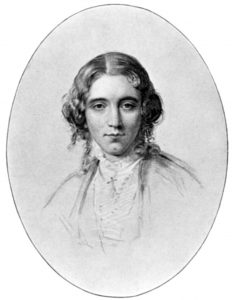
Historical Context: Forced slavery in the Americas brought over by Europeans began as early as Columbus himself. From there, slavery continued to grow and began to boom in the late 1600’s as the new world saw an enormous increase in population, jumping from around 111,000 people to an estimated 1.6 million as learned in class. It was during this period plantations began to pop up all over the south and cash crops began to bring in much of the revenue for our new countries economy. However, as the European population kept increasing, so did the number of slaves. This sent the south on a streamlined path for rebellion and uproar as the number of slaves, and those who sympathized with them began to grow to revolting numbers. Thus creating the abolitionist movement. It was in the early to mid-1800’s that the abolitionist movement hit its peak after the Fugitive Slave Act was passed and before the civil war- the war that ended the institution of slavery. Which proved to be a huge success for the abolitionist, and first step towards true freedom for African Americans in the U.S.
Who Were the Abolitionists?: The abolitionists themselves were made up of a medley of different novelists, columnists, poets, speakers, etc. who all varied in background, life experience, and opinions. These activists ranged from Harriet Beecher Stowe, a white woman and teacher from the north who wrote Uncle Tom’s Cabin which is arguably the most influential piece of abolitionist writing to this day, to Frederick Douglass, an enslaved black man turned author and speaker who was eventually became able to buy his way out of slavery and acquired a massive following (See slave narrative sections). Other authors include Lydia Marie Child and her writing The Quadroons, Harriet Jacobs and her work Incidents in the Life of a Slave Girl (Slave Narratives), and Equiano with The Interesting Narrative (Slave Narrative). All of these authors bring unique perspectives and ideas to the table on where the problem of slavery lies, and how we as Americans ought to fix it.
Themes: Each one of these authors all supported and advocated for the abolitionist movements in different ways and held different beliefs on slavery and slave owners. Therefore all of their works varied in slightly different themes and ideology. One example of a theme that rang true was that of religion and Christianity. For Jacobs, this means pointing solely towards a Christian slave owner’s hypocrisy while Douglass also used Christian rhetoric and pointed towards the Christian paradox of Ham as a way Christians justify slavery. Other themes portrayed included the brutality towards slaves and the thinking that blacks need to represent blacks in the movement, as well as the power of education, and the fractions slavery can create in both black and white families.
Works Consulted:
Equiano, Olaudah. “The Interesting Narrative of the Life of Olaudah Equiano.” The Norton Anthology of American Literature beginnings to 1820 vol A, Edited by Nina Baym and Robert S. Levine, W.W. Norton and Company, 2012, pp. 688-721
Douglass, Frederick. “Narrative of the Life of Frederick Douglass, An American Slave.” The Norton Anthology of American Literature 1820-1865 vol. B, edited by Nina Baym and Robert S. Levine, W.W. Norton and Company, 2012, pp. 1174-1239
Stowe, Harriet Beecher. “Uncle Tom’s Cabin.” The Norton Anthology of American Literature 1820-1865 vol. B, edited by Nina Baym and Robert S. Levine, W.W. Norton and Company, 2012, pp. 807-904
Child, Lydia Marie. “The Quadroons.” The Norton Anthology of American Literature 1820-1865 vol. B, edited by Nina Baym and Robert S. Levine, W.W. Norton and Company, 2012, pp. 183-190
Jacobs, Harriet. “Incidents in the Life of a Slave Girl.” The Norton Anthology of American Literature 1820-1865 vol. B, edited by Nina Baym and Robert S. Levine, W.W. Norton and Company, 2012, pp. 920-942

